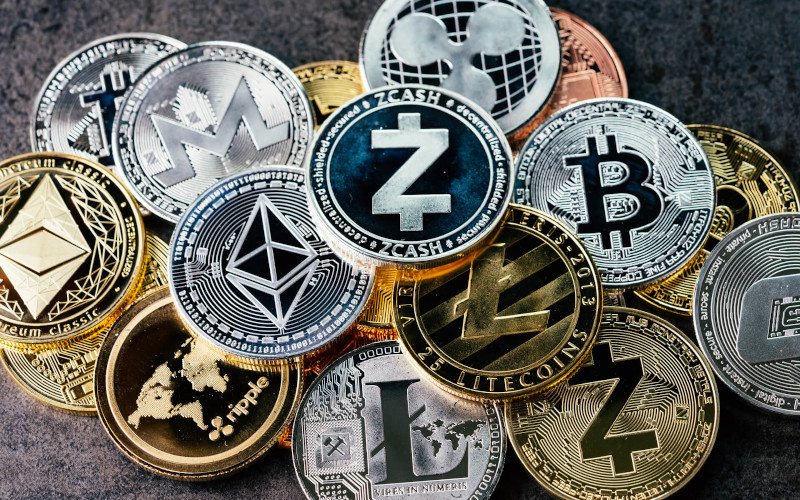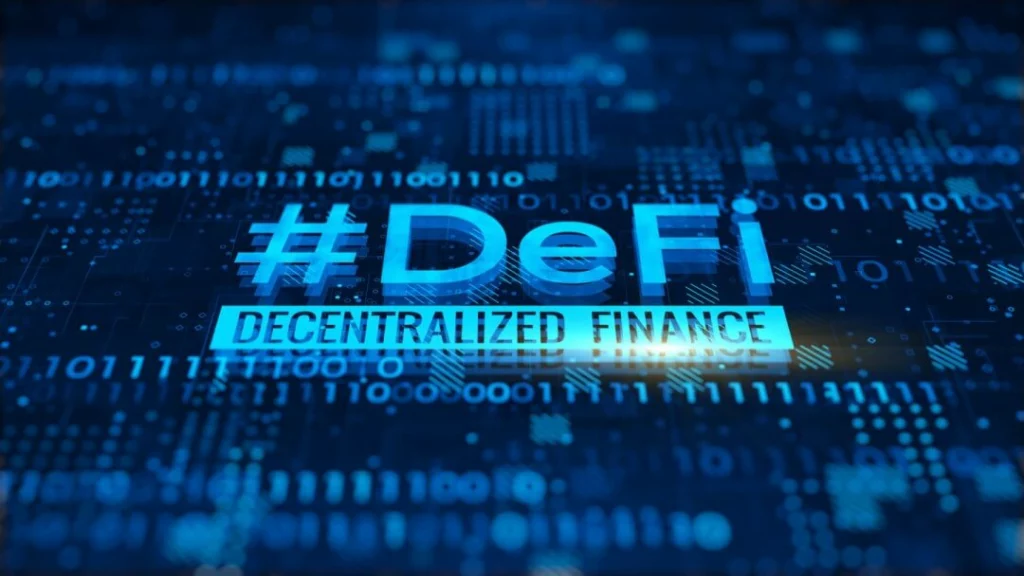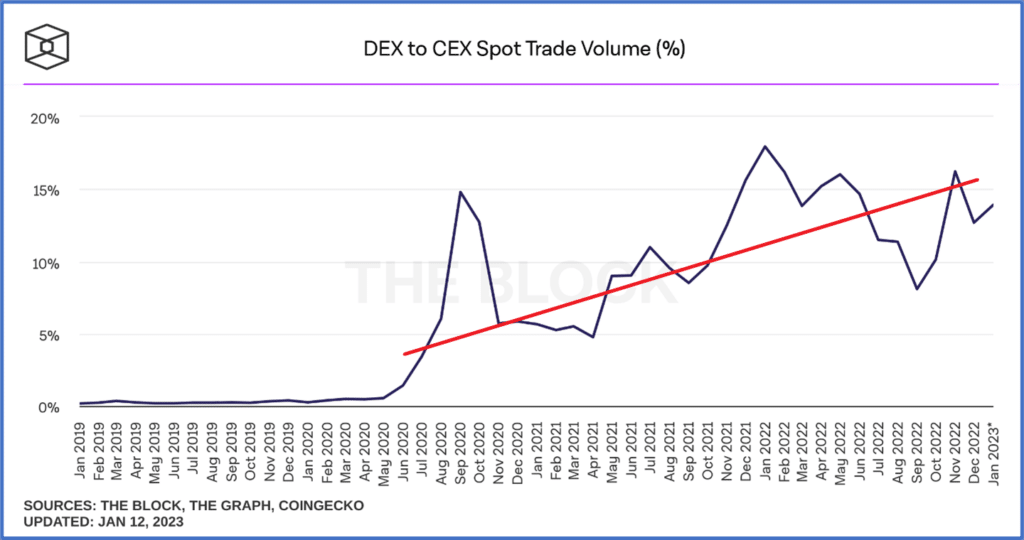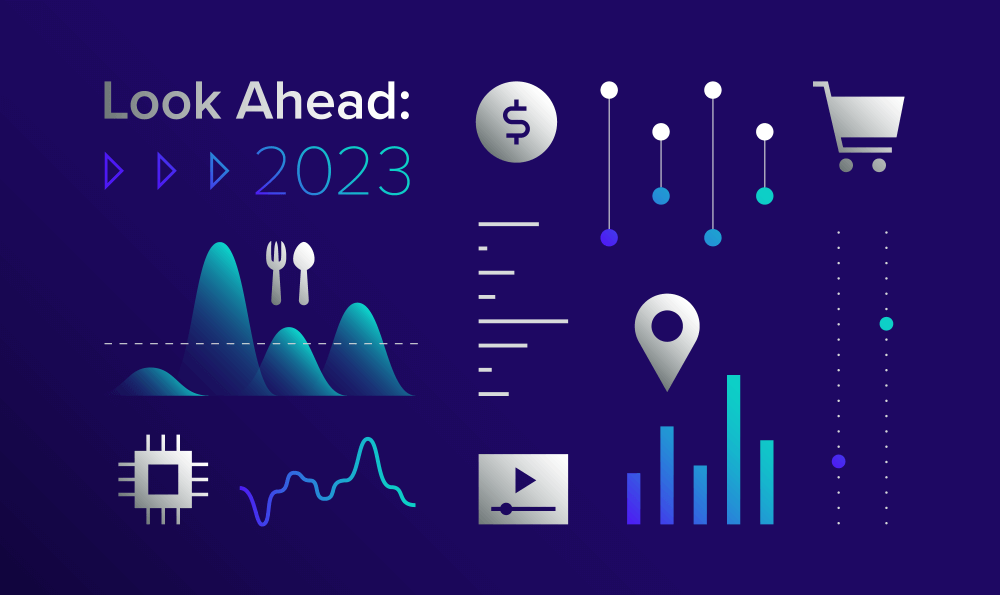We’re at the beginning of another year in crypto, and let’s hope 2023 fairs much better than 2022. In today’s featured article, I’ll explore what I’m excited about in crypto for this year. But before I continue with this article, let me ask you a question.
Some people think the headwinds for crypto in 2023 are too strong and that the fledgling asset market won’t survive the current market environment. Specific concerns include:
- Geo-political concerns – Global markets face a challenging environment due to the Ukraine-Russia war and the looming global threat between China and Taiwan.
- Business failures – Many key players went bankrupt in 2022, and the after-effects still linger. The collapse of big-name companies like Luna, 3AC, Voyager, Celsius, and FTX has devastated people’s trust in crypto.
- Regulatory uncertainty – With the SEC-Ripple lawsuit still unsettled and the recent collapse of FTX, regulators are chomping at the bit to introduce new crypto regulation. What kind of regulation and how it will affect the markets is a big unknown.
- The Fed Funds interest rate hikes through May 2023 bring financial uncertainty to markets in general.

While I agree that these concerns are valid, they do not dampen my enthusiasm for this technology. Why? All new technology goes through growing pains. If the tech is worth its weight in salt, it will eventually be scrutinized from every angle, as it should be. We all need to know that the tech is safe, respects people’s privacy, and provides value to society.
Even though I’m enthusiastic about crypto technology, I’m fully aware of its limitations. Scams are prevalent, and regulation is unclear, so more work must be done. But come on, let’s not throw the baby out with the bath water. Don’t give up on this fledgling technology just yet. I believe it has a great deal more to offer.
Crypto Trends to Watch
While it’s difficult to predict the exact developments in cryptocurrency technology for 2023, several trends and potential advancements could shape the industry in the coming months. Some of these include:
- Continued growth and development of decentralized finance (DeFi) platforms allow for the creation of new financial products and services built on blockchain technology
- Adoption of decentralized identity solutions (DID) aims to give individuals more control over their personal data and online identity
- Expansion of NFTs and GameFi
- Advancements in scalability and interoperability could make it easier for diverse cryptocurrencies and blockchain platforms to interconnect
- Increased focus on privacy and security, as regulators and market participants, raise concerns about protecting personal data and funds.
In today’s publication, I’ll explore trend #1 and leave the others for future exploration.
DEFI Crypto Trends
Decentralized finance (DeFi) platforms are financial applications and services built on blockchain technology and designed to be decentralized, meaning no single entity controls them. The goal of DeFi is to create a more open, accessible, and secure financial system that is not reliant on or controlled by traditional financial institutions.

The growth and development of DeFi platforms refer to the increasing popularity and use of these platforms and the continued expansion of their capabilities and offerings. DeFi has seen significant growth recently, with the total value locked into DeFi protocols reaching billions of dollars. DeFi growth stems from low-interest-rate loans, high-interest-rate rewards for liquidity providers, and the desire for alternative financial services that centralized institutions can not control.
In 2023, DeFi platforms may continue to grow and develop as they expand their offerings of new and innovative financial products and services. New products and services could include new types of loans, insurance products, and investment opportunities. However, it’s also important to note that the DeFi industry is still highly speculative, and the DeFi platforms used by the industry are built with new technology – which may carry higher risks than traditional financial products. The big 2023 trends to follow in DeFi are the self-custody of cryptocoins and decentralized exchanges. After the FTX saga in 2022, where Sam Bankman-Fried stole customer funds, self-custody, and security became hot topics. But remember, pain is often the precursor to good things. Pain motivates humans to make changes. And this is one reason I foresee many more positive changes blossoming in crypto.
DEFI Crypto Trends – Self Custody
Everybody has heard the phrase “not your keys, not your crypto,” but sometimes we forget it. We take for granted how easy it is to use crypto exchanges on our phones or the web. But as soon as we get complacent and start feeling confident about our actions, BAMM! The crypto world slaps us on the face and shouts, Gotcha! Case in point, FTX.
FTX was the poster child for a successful centralized exchange. They were growing faster than they could keep up with themselves. Then someone let the cat out of the bag and told the world FTX was stealing customer funds. Arghh!
If you aren’t familiar with this story, I wrote an in-depth featured article on our Blog. You can find it here: The FTX Crisis Explained . Unfortunately, in 2022 we saw too many big crypto institutions collapse, halt withdrawals, or file for bankruptcy.
So, how do we protect ourselves in 2023?
Don’t trust your crypto (and keys) to a centralized exchange. Use decentralized exchanges (DEXs) whenever possible with a self-custody wallet – preferably a cold hardware wallet. If you’re unfamiliar with self-custody wallets, you can learn more on our website Life with Crypto.
Perhaps all the bad things that happened with crypto in 2022 were good in the long run. Moving forward into 2023, crypto enthusiasts will take self-custody more seriously and learn the nuances of wallets, keys, seed phrases, and the like. It may take more education and better wallet experiences to bring everyone up to speed on self-custody, but the industry is moving in that direction.

After the fallout of the FTX disaster, Trust Wallet (owned by Binance) saw a 140% increase in active users. That trend continues every week. However, too many users still hold their coins/tokens on centralized exchanges.
Recently Trust Wallet surveyed its users and discovered 43% of those surveyed still hold considerable amounts of crypto on exchanges, while the remaining 57% stored their assets in a self-custody wallet. This survey tells us that there’s lots of room for self-custody growth.

Okay, what would make that 43% of central exchange users move to self-custody options? My guess is they want a one-stop-shop solution for all their self-custody and crypto trading needs – everything all in one place, not ten different wallets for ten different crypto assets.
That means self-custody wallets supporting many assets across multiple blockchains will be attractive. They’ll also want to be able to swap assets seamlessly across different chains. And those wallets offering an excellent user experience will gain market share.

For example, the Exodus wallet has been one of my favorite wallets and one that I recommend to crypto newcomers. The user interface is beautiful and easy to use. They support 260+ cryptos and many different blockchains. They’ve recently expanded the wallet’s trading and staking capabilities.
“Enjoy an enhanced user experience that emphasizes ease of use and financial sovereignty. Manage your cryptocurrencies with real-time charts. Securely trade or stake your favorite coins in seconds. Featured Apps make it easy to earn interest on crypto. No account setup is required. Download Exodus and you’re ready to go.”
More self-custody wallets with features like Exodus will be needed moving forward, and I believe the industry is working diligently to design and develop sovereign Web3 self-custody solutions.

With the cryptocurrency market in the state it is — recovering from the shock of the UST stablecoin collapse, the subsequent failure of several large VC firms, and the bankruptcy of FTX — one of the most important topics for 2023 is going to be self-custody. As both experienced crypto traders and crypto newbies grapple with the fallout from these crypto company failures, it will become more critical to provide education and resources on self-custody and private keys. We will see if the industry steps up to the challenge of designing and developing even more sophisticated self-custody wallets.
DEFI Crypto Trends – DEXs
Crypto exchanges are marketplaces that allow buyers and sellers to trade cryptocurrencies and other digital assets. There are two categories of exchanges:
- Centralized Exchanges (CEX): Run by a single entity, CEXs are intermediaries between buyers and sellers, facilitating orders and transferring funds between parties. CEXs have existed for many years since 2010. Examples include Binance and Coinbase.
- Decentralized Exchanges (DEX): Using blockchain technology, DEXs facilitate peer-to-peer transactions between buyers and sellers, eliminating the need for centralized intermediaries. DEXs are newcomers to crypto starting in 2020. Examples include Uniswap and Curve.
“You might ask, what makes a DEX different from CEX?”
Uniswap Labs is the top-rated DEX in crypto, and here’s what they say about their DEX platform.
Due to in-built user protections, we believe DEXs are superior for trading digital assets. They include:
- Self-Custodial: Users never relinquish control over their assets
- Permissionless: The only user requirement is having an internet connection
- Immutable: The code used to run the DEX cannot be modified or altered
- Transparent: All transactions get recorded on a public ledger and can be queried
All these traits are designed to protect customers from negligent or malicious actions that could jeopardize assets without their knowledge or consent. Remember that all DEX platforms are designed with these protections built into the code. However,
One question to ask yourself, how robust is the code for thwarting would-be computer hackers? The better the code, the safer the platform. That’s why reputable projects like Uniswap Labs have their code audited by third-party firms.

Can DEXs overtake CEXs?
Despite the multi-year head start, there is strong evidence that DEXs are gradually taking over market share from CEXs. The chart below shows that the DEX-to-CEX spot volume ratio has steadily increased.

A few items need to be addressed for DEXs to continue attracting new crypto buyers and sellers. Currently, it’s much easier to use a CEX than a DEX, but crypto diehards are paving the way by using DEX technology while it’s being fully developed. Remember, the big attraction for early adopters is being self-reliant and having total control over assets.
Here are 3 things that DEXs must address to win over more users and grow market share.
- Easier onboarding for purchasing with fiat currency
- Easier UI/UX for token management with wallets
- Lower transaction cost
For many everyday crypto investors, the user experience is way more critical than self-custody, permissionless access, immutable code, and transparency.
While it’s understandable that many users want a safe and easy-to-use platform, crypto front-runners tend to ignore the niceties in favor of the cutting-edge technology trend.
Eventually, I believe crypto newbies and crypto experts will get what they want. One telltale sign is what happened in 2022 with the collapse of FTX, the well-known CEX.
As markets faltered after the FTX collapse, DEX trading volume skyrocketed. During that time, Uniswap’s trade volume outpaced any other CEX by a long shot. This event is verifiable evidence that DEX volume can overtake CEX volume. Eventually, more people will recognize that controlling your own money is critical. No one cares more about your financial well-being than you do.
It’s only a matter of time until the UI/UX of DEXs gets easier to use and becomes more attractive to everyday crypto users.
Thank you for reading. For more in-depth crypto content, join my new Let’s Crypto! Substack newsletter.
https://kellysunshawl.substack.com/

